Author(s): Ankur Saini
The retail industry is at the precipice of a significant shift owing to the adoption of AI within the realm of HCM. Concisely, initially, HCM in retail was more of a labor-intensive approach that deals with recruitment, training, engagement, and retention of employees. AI has now come to transform these processes by automating the tasks that take a lot of time and labor, giving predictive analysis, and ensuring a personalized approach to its employees. This paper aims to discover the effects of artificial intelligence in different aspects of HCM, namely recruitment, onboarding, engagement, workforce planning, performance management, and retention. With the help of numerous examples of actual retail companies, we study the use of artificial intelligence for managing human capital and gaining a competitive advantage. Furthermore, the paper discusses several ethical questions, such as using a biased algorithm, privacy policy, data protection, and job losses because of automated systems. Done correctly, AI presents excellent opportunities to improve workforce management and employee satisfaction and create a more competitive retail organization.
Retail will revamp itself, which is set to be led by artificial intelligence (AI). Traditionally, HCM in retail was very administrative and involved attracting, reboarding, building, motivating, and maintaining the organization's workforce. Nevertheless, AI has lately transformed the WFM by automating the process, improving their analytics, and the well-being of workers. These improvements allow the retailers to enhance their HCM approaches and minimize operational costs while increasing workers' productivity. This paper seeks to discuss the HCM in the future. It has shown how significant aspects, like artificial intelligence, are likely to impact aspects like recruitment, engagement, workforce planning, performance management, and retention. Also, we will discuss examples explaining how retailers embrace AI as a strategic resource in human capital management.
Although AI's primary effect is on HCM, it infringes on almost every facet of retail, including flows of goods and services and customer relations. In inventory management, artificial intelligence demand forecasting assists businesses, especially retailers, in forecasting the required demand and the correct stock levels needed, thus minimizing wastage. AI, especially IT, has also improved customer relations regarding their queries being performed through intelligent chatbots, giving quick, particular responses. Today, many retailers use AI to optimize core business processes and functions by automating the supply chain process and deliveries and following up on restocking procedures accurately. In the overall picture of the shifting nature of the retail format and its implications, AI interventions in managing a considerable workforce help link human capital with operational and organizational strategies and goals that best prepare employees for strategic demand in the business.
Implementing AI solutions has wholly revolutionized retailing since it was stuck with numerous challenges in HCM. For instance, firms such as Walmart invest in ensuring the correct number of people to staff and high turnovers, especially among the part-time and seasonal employees, so the costs of getting new employees and training them are astronomical. Furthermore, the former manual methods of workforce planning led to hazards such as an inadequate or excessive number of employees during critical sales days, leading to increased expenses to avoid customer complaints or low satisfaction. Another problem that can be called an issue is the need for feral-time feedback and resources for the practical training of employees to maintain their engagement. These challenges highlighted the need for a technological solution that could provide timely information, increase effectiveness, and enhance people's interest. Various challenges affecting the retail environment force retailers to look for innovative solutions from a new HRM paradigm, AI-based HCM, that provides a more continuous real-time solution to these emerging problems.
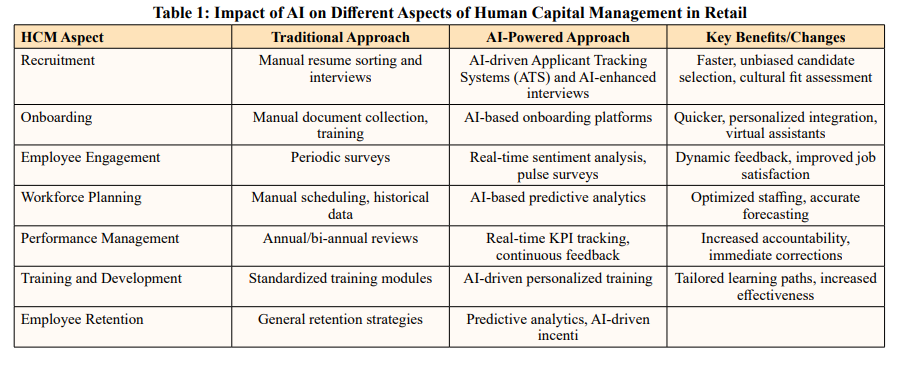
TheImpactofAI-PoweredApplicantTrackingSystems(ATS) ATS, supported by AI, has dramatically enhanced the recruitment process, where functions like resume parsing, ranking, and skill matching can be achieved through AI [1]. With the help of AI algorithms, these systems can sort and rank several applications and select better-skilled candidates than conventional approaches. This automation optimizes the method, reduces the time-to-hire, and allows the staff to concentrate on quality candidates.
Another benefit of AI in ATS is the screening of technical competence and an applicant's compatibility with the company's culture and behavior patterns. Behavioral assessment reports, and records of employment algorithms analyze candidates' values for affinity towards organizational culture. This enables retailers to avoid hiring employees who might be costly to let go even though they have the qualifications needed.
The AI-enabled ATS system is updated through the learning process it makes. Such systems also change the selection criteria as they go through the various recruitment processes since they can look at the success rates of the previous recruiting and the failure rates. This adaptive learning approach ensures that hiring decisions are based not only on candidates' qualifications but also on the evolving patterns of successful hiring AI, such as system-predicted ATS, can improve the retailers' decision-making by providing information from an attractive and rejection pile view without bias from the resume screeners. The outcome is an enhanced overall recruitment process that delivers greater efficiency, lower rates of recruitment error, better time-to-hire, and landy-of-hire figures.
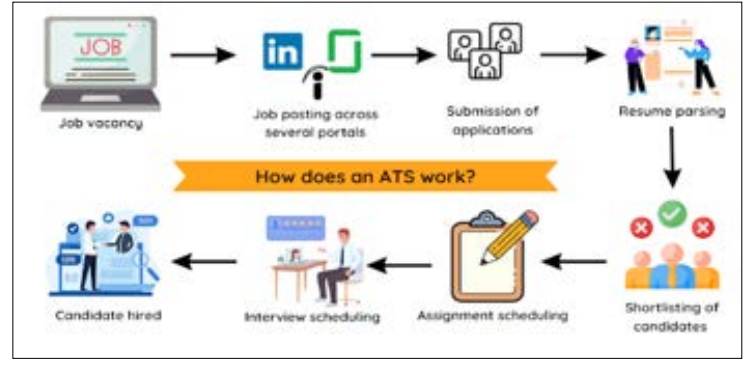
Figure 1: Applicant tracking system
New technologies are now being adopted into the interviewing method through AI, such as chatbots and video analytics tools for evaluations of candidates. Applicant initial screenings are conducted by AI-powered chatbots, which ask the candidates a set of questions and assess the answers given by the applicants on the spot. It also releases the recruiters' time. It makes the evaluation process uniform at the early stages so that the recruiters can dedicate more of their efforts to recruiting the best candidates.
Apart from chatbots, video analytics tools based on AI supplement the richness of the candidate controlling procedures [2]. These tools work to read the body language, tone, and words chosen during any video interview. Through these, AI enables the recruiters to assess qualities such as emotional intelligence, communication, and sample cultural fit that potential employees exhibit. For instance, such data provide a more objective assessment than the 'face-to- face' interview analysis.
AI-enhanced interviewing also opens up several other opportunities: one is getting rid of implicit bias. Another is avoiding biases in interviews because all the questions are the same, and candidates are evaluated according to predefined criteria. This means that the recruitment process becomes fairer to different talented candidates, hence allowing the retailers to employ more talents from the minority.
Using AI in interviewing optimizes the effectiveness of candidate evaluation and increases the reliability of the final hiring decision. AI provides deeper insight into the personality of the candidates, owing to its ability to exclude bias. Thus, it helps recruiters make more informed decisions that are in tune with the requirements of the roles and the culture of the organization.
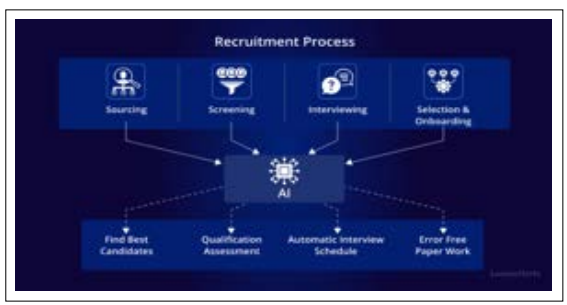
Figure 2: AI in talent acquisition
Accurate Employee Onboarding for Quicker Integration Retail, in particular, may face significant challenges in this stage because onboarding is a lengthy process affecting newcomers and employers. Onboarding platforms powered by artificial intelligence are making this process easier by integrating technical tasks such as document collection, training calendars, and enrollment. These outstanding tasks are handled by AI, eliminating the need for the HR teams to attend to these issues and get employees into their positions effectively [3].
In particular, AI-based virtual assistants are fast becoming essential assets that help new employees navigate the onboarding process. These assistants respond immediately to queries experienced by the employee, suggest relevant materials according to the employee's position, and design an employee onboarding process. These individualizations make new hires experience the care and attachment from the company from their early days of joining the company and, therefore, optimize the time they take to contribute to the performance of the organizational unit or team that has hired them.
AI can follow the new employees' onboarding process through various developmental stages while tailoring each individual's process. AI ensures that any obstacles or slowdowns in the onboarding process are detected and solutions are offered to continue the process. For example, if a new employee finds working on a particular process complicated, the system could suggest a solution that helps him quickly overcome that challenge.
When applied in onboarding, AI can improve employees' engagement and productivity right from the time they are hired. It is also more effective in the long run since the new employee is initiated in the right way right from the initial stage of his employment with the company.
AI is revolutionizing how retailers conduct employee engagement surveys through sentiment analysis and pulse surveys of employee engagement conducted in real time [4]. Unlike periodic employee engagement surveys, usually held annually or bi-annually, AI- enabled solutions Tabs 4e frequently collect data from different sources such as email, internal messaging systems, and employee surveys. This constant feedback loop of morale gives a dynamic perspective to the employers so that they can attend to issues as and when they arise.
For that purpose, the various sentiment analysis algorithms used are helpful and assist in effectively translating the tone and the emotions the employees express. These algorithms are helpful to managers as they provide data on the overall mood of a team, which may reveal problems with employee satisfaction. In this way, leaders get real-time data about job dissatisfaction or tension in the work environment, and proactively, they can make interventions that improve employee satisfaction and harmony in the workplace.
Compared to typical problem reporting, AI feedback collection has the added value of providing recommendations regarding the case's engagement based on previous experience and statistics. AI can think for itself patterns in employee behavior and give managers valuable tips to create a better and more exciting work environment. This prevents managers from being reactive and constantly babysitting their employees while enabling them to fix issues that demotivate workers and cause high turnover quickly.
It is evident that a real-time AI feedback environment makes it easy to capture, contain, and manage every employee's feedback without waiting for regular and fixed meetings. This makes the employees and management happier and more loyal, and it makes the employees more motivated, which is incorporated into creating a stronger workforce.
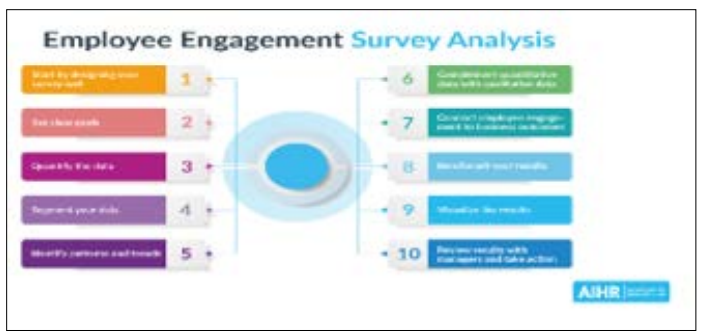
Figure 3: A Complete Guide to Employee Engagement Survey Analysis
AI makes learning and development more attractive by developing professional development maps specific to employees' abilities, organizational positions, and career goals [5]. Employment of artificial intelligence in training concerning original performance data prescribes certain deficiencies in certain employees' abilities and proposes specific inevitable training modules or courses. This approach to training and development is a top-bottom consideration for the needs of the employees with the increase in learning and job satisfaction.
Unlike training suggestions on conventional systems, these systems offer a well-rounded AI-driven learning path relevant to an employee's passion and career goals. Employees are more willing to change when they find that a particular behavior will be rewarded or enhance their human capital. Such a form of learning enhances skill development and increases training effectiveness because the employees feel appreciated by the companies for their investment in their training.
The AI-enabled learning solution also tracks progress in real-time, meaning that the learning milestones are also communicated to the employees and managers. It enables employees to track their development and modify the learning activity. It allows managers to better provide and mentor the employees based on the information obtained. AI is also used to define talent based on performance today and their performance in the foreseeable future, hence promoting talent development inside organizations.
Effective incorporation of AI in learning and development helps retailers develop a better-quality, engaged, and prepared workforce for tomorrow. Personalized learning pathways not only enhance staff satisfaction but also enhance business performance by addressing training that enhances staff skills and aptitude for a competitive retail market.
AI has been found critical in improving employee wellness, mainly by providing one-size-fits-all wellness programs that can be tailored to meet the individual needs of the employees. AI-centered programs can provide wellness solutions like meditation sessions, strength training, and stress management tools specifically for each employee, depending on their lifestyle and health conditions. This approach also increases employee health and teamwork satisfaction, increasing productivity.
Mobile and computer technologies, such as wearable devices and AI-based health monitoring tools, increase the customization of these wellness applications [6]. By monitoring a range of health factors, including heart rate, sleep, and activity, AI systems offer real-time and efficient advice to employees on the best ways to enhance their well-being. By being informed by such findings, employees can make better health decisions, meaning that there would be fewer sick days and higher productivity due to enhanced energy, among other benefits such as quality work-life balance.
However, AI-driven wellness programs are more than 'firefighting' solutions since they may suggest new healthcare solutions based on an employee's daily activities. For example, AI can recognize specific work schedule patterns, exercise regimens, and sleep patterns and make specific changes to them. This ensures long- term employee health and well-being, hence avoiding the problem of burnout, especially where employees have to deal with highly stressed clients, as is the case in most retail places.
Through AI in wellness programs, retailers can guarantee that the nature of their employees is protected to offer their best concerning health issues. This leads to having a healthier and more active employee than others who are not trained to perform the job, especially in the fast-moving retail industry. Also, having AI- based wellness programs also shows that the employer cares for the workers' well-being, which helps increase loyalty and job satisfaction.

Figure 4: AI-Driven Employee Wellness
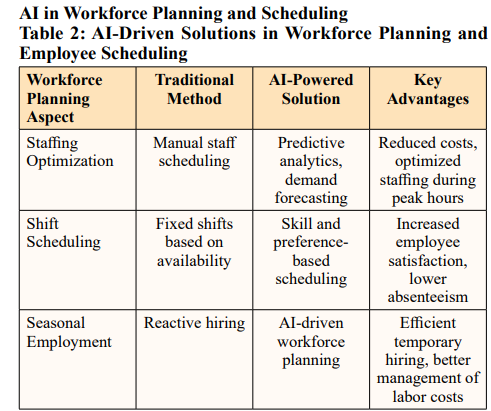
Using advanced AI-based predictive analytics models is crucial while managing diverse workforce planning aspects for the retail industry [7]. These tools are derived from historical sales data, customer traffic, and other factors like weather and holidays so they accurately predict staffing requirements. This feature makes it possible for retailers to forecast periods in any given day or week that are likely to have more customers, hence hiring adequate people to attend to the congestion without necessarily incurring a lot of cost during periods with few customers.
The core strength of predictive algorithms is their ability to find trends and patterns within large data sets and, hence, predict high-traffic hours with high accuracy. This means that through the deployment of appropriate staff, requisite workforce planning, and proper staff rostering, service delivery by retailers will be optimal in peak periods. Such a strategy decreases the dangers associated with insufficient numbers of employees during peak traffic, which can result in customer repulsion and, thus, low revenues.
AI tools are self-learning, and they improve at this activity with time as they incorporate more data into their model. The more data collected and analyzed, the better these tools get at their predictions, which lends itself to being more automated and efficient for workforce planning models. Another advantage that retailers will likely gain from the system is that they will work in a dynamic environment, leading to resource utilization and cost overruns.
The combination of predictive analytics in workforce management and planning helps increase operational capacities and improve the health of the financial position [8]. In effect, by cutting labor costs but maintaining staffing levels that meet operational needs, one can gain a competitive edge in the retail business, which requires fast and efficient worker organization.
AI schedules quickly replace conventional shift schedules in the retail industry by integrating employee skills, preferences, and work availability. Instead of just assigning people into shifts, these efficient instruments of mapping talent overlaid the workers to the shifts that require their talents the most. This helps ensure that every shift is adequately staffed with the right people to improve general performance and productivity.
Apart from enhancing skill, scheduling AI platforms require some considerations regarding the individual employee's preferred shift and days to work. Since schedules match employees' preferences, retailers can increase employees' contentment, commitment, and productivity, resulting in lower absenteeism rates. Employees who feel their choice is being considered will likely remain loyal and work optimally.
These AI-based scheduling tools also provide flexibility by making changes at the eleventh hour to cater to any changes that might have occurred. For instance, in cases where an employee may be absent from work or there may be a shortage of customers, the AI tools can quickly fill in the void by assigning the absent employee's duties to other qualified employees or bringing in a substitute in case of a shortage in customers. This flexibility helps the workforce to effectively adapt work and other human resource management processes to the ever-changing nature of the retail environment.
Adopting AI in shift scheduling benefits retail stores and employees since everyone is happier with the new program [9]. This saves time that can be devoted to other activities, increasing the productivity and efficiency of operations among the retailers and employees and improving work-life balance. Such an approach to scheduling enhances a retail firm's competitiveness and ensures that workers remain motivated.
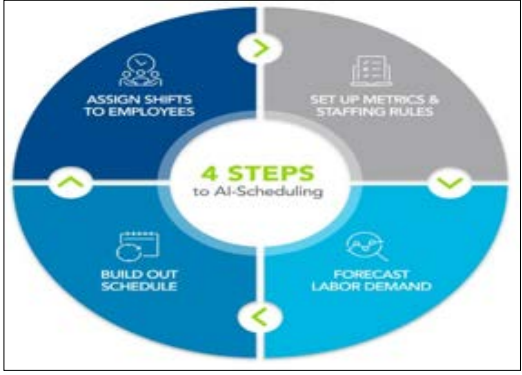
Figure 5: AI-Powered Employee Scheduling
Retailers always need help with staffing since employees are laid off during specific periods of the year, usually during the holidays or sales. The fluctuation in demand is addressed through AI- driven workforce planning tools that consider historical seasonality data and potential future trends in labor requirements among retail businesses. These tools allow retailers to plan for staff requirements several months before, ensuring they are always ready to cater to crowds.
AI systems use various methods in the hiring process of temporary employees, whereby it only takes a shorter time to select the most qualified candidates from a pool of such talents [3]. This not only helps in fast-tracking the hiring process but also guarantees access to a quantifiable workforce amid the surge of demand. Thus, the efficient introduction of temporary people allows for avoiding disruptions in the work of retailers while providing high-quality services.
It can also enable the proper handling of the changeover between the permanent and temporary employees. Suppose there's a need for enlargement or downsizing. In that case, this information will help retailers control their labor costs while at the same time guaranteeing the fluent running of their businesses during the peak seasons. Such an intelligent approach ensures that some costs are regulated so that retailers can afford to employ fewer workers during off-peak seasons.
By using AI to tackle problems related to the seasonal variability of labor demand in retail, retailers can enable local employees to work efficiently. By leading demand, automating employment, and managing staff changeovers, retailers can strike the appropriate balance between cost-saving and operational readiness, thus improving the retailers' competitive positioning in the retail market
Historically, performance management in the retail business has been an annual or biannual process, which cannot capture the dynamics of the retail industry. This can cause a disconnection between the current business needs and the employee's performance. AI platforms are being transformed by these focal metrics across this landscape because they allow real-time KPI reporting to evaluate employee performance.
Such dimensions can include a set of KPIs such as revenues, customer satisfaction levels, and the frequency of task completion by the employees [10]. Such platforms also allow employees to make corrections as soon as possible without waiting for their superiors' feedback. This feedback loop is essential within the retail context, in which customer needs dynamics may transform instantly, thus helping keep the staff on the right track regarding organizational objectives.
When performance is monitored in real-time, it increases both accountability and transparency in teams. Individuals performing organizational tasks are in a better position to note their performance level as well as the areas that require more improvement. This motivates retail employees to work hard as they can easily see the benefits of their actions to the company and the customers.
From managers' point of view, artificial intelligence defines tangible things that can be used to help in their coaching and supporting processes. For example, rather than wait for a formal review, managers can see employee performance trends and provide help as they happen. Such directed assistance relates to a heightened performance culture based on continuous learning, flexibility, and relevance to the existing conditions prevailing in work environments.
Real-time performance indicators and feedback considerably change performance management. More significantly, by implementing the continuous feedback platform, retailers can build a strong culture of workforce flexibility that can help address customers' needs and deliver the desired business outcomes.
Coaching and mentorship in the retail industry have become almost reinvented through the help of AI systems, which use personal data to meet the needs of every worker. Traditional mentorship models may need to be more detailed in their approach. However, AI provides real-time performance data to make the coaching experiences more personalized. This approach allows the employees to be given specific information that they need to change depending on their strengths and weaknesses.
For example, the system can detect an employee who performs well in the company's performance area but has limited communication skills and coach them on interpersonal skills to improve [11]. This mentoring not only enhances skills acquisition but also confidence in the organization, as the employees specifically get coaching on areas of their weakness. By describing one's coaching in detail, it will be possible for retailers to develop a more effective and comprehensive workforce.
Apart from the idea of using AI as an individual tutor, AI can effectively match the mentor and the learner according to performance data, learning preferences, and career goals. This process assures that such employees get a professional who can guide and assist them in a productive way, thus benefiting from the relationship. People benefit more if coaching addresses their issues as workers in their life course.
It also fosters a culture of learning within organizations due to the aspects of personal coaching and mentorship that are integral to personal coaching and mentorship. Another aspect that points to the actual support of the employees' further professional development is the commitment to the growth of the employees of the retailers. It has the advantage of increasing employee retention and satisfaction and creating a more excellent, diversified pool of human capital capable of facing the new challenges of the retail sector.
The use of AI in coaching and mentorship makes it a culture that can be pursued continually. In that regard, retailers are only able to fit with skills and thereby enable their human capital for success in their businesses.
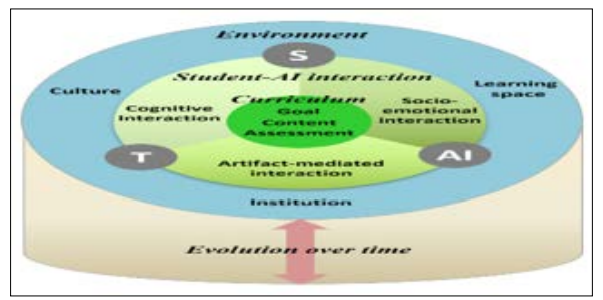
Figure 6: Student-AI Collaboration Model
Machine learning is changing how employees are trained by making the process automatic and according to the employees' needs. Previous training models involve the use of canned content that may not address the training needs of individual employees in organizations or may not be coherent with their learning styles. AI platforms solve this problem by reviewing available learning material depending on the employee's position, work history, and development plan to make learning the most effective.
Among the other benefits of AI in training, one should mention the ability to deliver content in brief, self-paced segments [12]. Employees can access Self-paced learning content when they desire, enabling the organization to support learners when they are most willing to learn. This flexibility not only enhances the engagement level but also helps the employees to fit the training into their busy work schedules, which enhances the rate of completion of the training and the retention of the learned information.
The AI systems match training material with the speed and way each employee can learn. For instance, if an employee has problems comprehending one concept or another, the AI can suggest more materials or different learning types. This adaptive learning approach ensures that the requirement-specific training is promptly given to the employees, optimizing their ability to perform their tasks and leading to job satisfaction.
Real-time progress tracking is another benefit of AI training platforms for facilitating personalized learning. AI systems must be able to track the progress of employees to determine that modifications of learning paths are required. This flexibility translates into the ability to enhance the effectiveness of training delivery processes so that employees only get the best at the right time.
In the long run, adopting AI technology in the automation and personalization of employee training cut the time required to reach competency and enhance productivity and employee satisfaction. Creating a satisfying training environment that responds to particular conditions is an enhancement for retail organizations as they improve organizational commitment by creating a climate of learning that is good for the continuous improvement of human capital.
Minimizing employee turnover is an issue that constitutes a set of strategic priorities of the retail HCM because frequent changes in the workplace affect organizational costs and productivity. A predictive analytic solution using artificial intelligence is a solid solution to the issue since it can point out factors that lead to high turnover risks. These systems consider various factors, such as the level of disengagement, employee performance, market state, and time factors, to estimate the probability of turnover [13,14].
Looking at previous trends, AI can identify signs that an employee might want to quit the company. For example, a low engagement score, a declining performance level, or consistently poor feedback are signs that call for action [15,16]. It helps retail managers to avert some of those problems by getting to know the issues the employees present have to avert turnover before it happens [17].
Such a strategy also helps decrease turnover rates and increase the organization's human capital stability. Processes like providing development opportunities, changing the salary, or enhancing the working conditions for the detected at-risk employees demonstrate the company's accurate interest in their well-being and, therefore, may magnificently increase the principal turnover [18,19].
Predictive analytics give managers insights into the trends regarding turnover with the respective teams, and they can intervene effectively to solve the natural causes of turnover rather than merely applying makeshift solutions to the issues [20]. For example, where data obtained show that a particular department has high turnover rates, then leadership can try to understand why or take corrective action towards enhancing the working conditions of a specific department [21].
Implementing predictive analytics enables retailers to create a more effective workforce. Retailers can enhance employees' health by redirecting turnover and promoting a positive organizational culture, leading to optimized organizational balance [22,23].
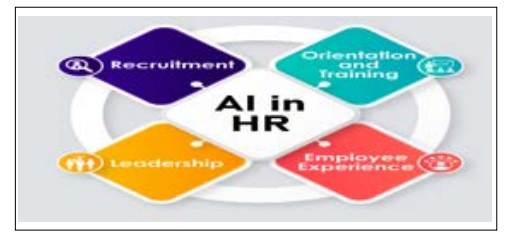
Figure 7: Leveraging AI to Predict Employee Turnover and Improve Retention
AI is also useful for choosing and deploying incentive plans that align with performance. Most conventional reward schemes are designed in a standardized, inherent manner and cannot be expected to foster motivation in the workforce. Thus, utilizing the data, AI platforms can suggest specific rewards to motivate employees according to their sales performance, customer opinions, and attendance rates.
Personal incentives are more encouraging because they correspond with what employees would like. For instance, while financial incentives could appeal to a few workers, others prefer earning time off or promotions. Thus, with such information about individual preferences, AI can contribute to designing incentive schemes that will be more meaningful to the retailer's workforce and, therefore, more motivating.
AI also guarantees that reward delivery is more equitable and well-coordinated within the organization. Transparency in the incentive process gives employees the confidence to work harder, and they trust the princess since rewards are given depending on their performance. This increases the perception of fairness, making it easier for a company to satisfy everyone with special favors since it may increase the turnover rate.
AI integration in incentive programs also enables periodic amendments based on employee expectations and performance trends [24]. This way, retailers can constantly evaluate and adjust incentive structures to enhance performance. This dynamic management of incentives encourages organizational recognition and value, thus improving the morale of the worker and encouraging retention.
The intelligent incentive schemes help retailers better engage employees and the workforce. Success means providing incentives for driving performance and avoiding the belief that other employees are being favored. In this way, organizations can maintain low turnover and ensure high performance amongst their personnel.
Employing AI to Make Clear the Procedures of Promotion Promotion opportunities are essential to keep the employees, and AI can significantly improve the organization's ability to develop and disseminate more defined and actionable career mobility paths. Using data on employee performance, domains of competence, and career preferences, AI systems can provide information about future roles and how to progress toward them as career ladders. This enhances organizational commitment because it enables employees to create mental maps of their future in the organization.
All these career paths are automatic and generated according to an employee's growth and performance on the job. When new skills are learned, or performance targets are met, the career path maps of the employees change. Such responsiveness means that employees are always aware of the possibility of promotions and other opportunities, thus increasing their rate of decision-making concerning their careers.
Outlining an apparent career trajectory makes the employees more proactive about their career development on the organizational level. Suppose there is a clear structure of the career ladder. In that case, employees become more focused on professional development and more inclined to complete skill-building activities and search for development opportunities. It also leads to the workforce's acquisition of more skills, thus making the workforce more diverse and versatile.
AI can also be helpful in career mapping since it involves data analysis for talent discovery within an organization. With such ideas about which skills should be necessary for future positions, retailers can begin to look at examples of training and development programs. This strategic approach to employee management shall closely balance employee development so that organizations can be ready to face future challenges and maintain the best employees.
Using AI to develop obvious career advancement opportunities has not only benefits in terms of employee retention but also in terms of employee satisfaction. Therefore, with an improvement in the current data quality, retailers could help uncover growth opportunities and strengthen the culture, which has the potential to help stakeholders increase operational efficiency that would positively impact the organization's employees and the business.
AI is also capable of improving the health of its employees, which leads to increased retention rates. Using AI-enabled programs, retailing companies can health to worrying stress levels, satisfaction, and general health. These platforms can help determine the effectiveness of the employees' condition based on the data collected from the surveys, feed forms, and even wearing devices.
This way, the retailers can study employees' well-being profiles as they find ways to undertake wellness programs that address some issues among the workers. For instance, if the data reveals that employees are stressed, it becomes possible for management to provide solutions such as stress management programs, access to mental health services, and flexible working hours. A positive step would be acknowledging the proactive approach to the students/ employees, which may lead to high job satisfaction and loyalty.
It needs to be noted that with the help of data-based AI, one can develop targeted health management strategies that meet the needs of every worker. Ways of providing support to cover data insights include providing needed resources like KPIs on workplace health activities, such as offering additional fitness challenges, pits you have to have mindfulness activities, or mental health support for the employees of the retailers. They emphasize well-being, which can significantly minimize levels of burnout and turnover.
Moreover, promoting a well-being culture, also called a health-promoting culture in an organization, can also improve organizational culture in the workplace. Supporting the employees' mental and physical health increases their chance to be active, participate, and be engaged, thus improving the teams' performance. Implementing a company culture of well-being can help, and it is the key to establishing long-term retention of employees.
Improving employee quality of life benefits retailers that utilize their resources and expertise to develop AI solutions [25]. Decision-making that is relevant to employees' well-being also helps reduce turnover rates, thus enhancing workplace morale and organizational performance.
Having meaningful engagements is an essential aspect of the retention of employees. AI gives excellent opportunities to develop engagement plans in retail. Thus, AI can be used to track the level of employee engagement through real-time feedback and actual sentiment indices among retailers. Using this artificial intelligence facilitates means and ends for management to monitor the level of satisfaction among the employees, discover new trends, and manage any issue that may arise in the organization [26]. Through consistently and cumulatively gathering data from different sources like surveys, e-mails, and performance figures, these systems assist the managers in perceiving the employees' attitudes and preemption of possible issues.
AI also enhances the possibility of customization of the engagement approaches. By knowing the self-interest and preferences of the employees, the retailers can be in a better position to promote engagement programs that would be compulsory to the employees, thus enhancing satisfaction and commitment. For example, group incentive programs, including employee appreciation, organizing group events, and/or learning sessions, enhance employees' motivation [27].
AI integration enables retailers to monitor the effectiveness of engagement approaches in the business over a long period. In this way, employee activity, satisfaction, and performance data can be used to improve and modify engagement strategies to help employees address their needs, promoting organizational learning and dynamism [28]. This guarantees that the tactics used for engagement are relevant to the needs of the employees in the working force, hence increasing their morale and retention and diminishing turnover. Consequently, AI integration in employee engagement strategies is a potent asset for retailers. Thus, by engaging the employees, AI enhances active communication and continued interaction, supporting organizational progress [29].
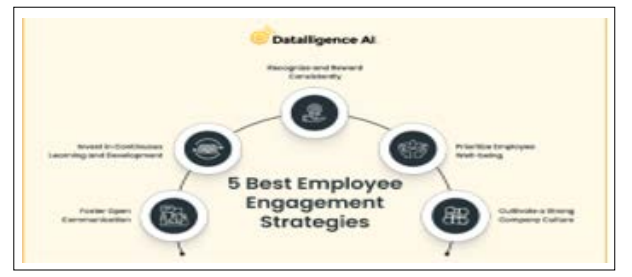
Figure 8: Employee Engagement Strategies for a Better Workplace Environment – Datalligence
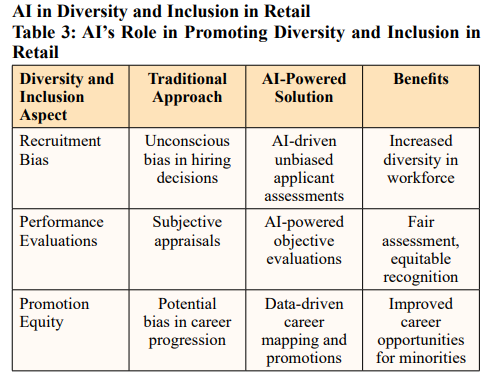
The modern retail industry cannot exclude diversity and inclusion policies, but unconscious bias often enters the hiring process. AI technology can eliminate such biases because it has no other means of selection but based on the applicant's qualifications, experiences, and skills rather than their names, origins, or complexions. Through AI tools in the recruitment processes, employers can assess the applicants through performance indicators, making the process more fair.
These AI systems review an employee applicant's various data and can exclude possible biases that can influence the selection process. For instance, they can help evaluate candidates according to their experience and skills, which means equal chances for candidates from the minority. This suggests a reliable performance- based technique that assists in overcoming the problems posed by prejudice and enhancing the organization's workforce diversity.
AI can also examine past employment statistics to identify any discriminating trends within companies' recruiting processes. Hence, by identifying these patterns, companies should make strategic changes and modify their inherent strategies to ensure they appeal to a more diverse talent pool. Such an approach not only improves the fairness of the recruitment exercise but also creates staff diversity that can represent a company's customers.
Depending on the data provided, AI-based tools may also help identify outreach strategies that can target members of underrepresented groups. Regarding candidate sourcing with an emphasis on minority, specialized, and unique talents, retailers can tap into several sources to increase the diversity of their organization's workforce. This embrace of diversity at the hiring level is critical to promoting equity in organizations.
Using artificial intelligence in staffing allows retailers to create a more diverse talent pool, essential to attaining competitive advantage and driving top-line results. Inclusive teams are diverse because members have unique ideas that offer added value to the organization and their customers.
AI-Powered Performance Evaluations for Fair Assessment Appraisal in retailing has long been based on judgment, usually influenced by prejudice, and compromises the outlook of worker relationships and diverse staff. AI brings an element of impartiality in measuring and evaluating performance and leads to improvement since no discriminative aspect has ever been considered. Using figures like sales, the number of customers' touchpoints, and the efficiency of completing assigned tasks, AI guarantees that assessments are not based on people's opinions.
Such an approach assists in avoiding biases and coming up with the most accurate results that give an applicant's performance [30]. AI systems are likewise helpful in identifying biases that might influence some assessments and provide valuable tips and recommendations to the manager about correcting such problems. Thus, with the help of making the evaluation process more open, the organizations provide the settings that imply the fair treatment of all the workers.
Fair performance evaluations by AI allow the dataset to be created with consistent criteria across various teams and divisions. The first of these is to ensure that all employees are subjected to the same standards of performance in the organization. Therefore, employees are better positioned to be assured of how their performance is measured because of evaluation equality.
It also helps managers to notice talented employees who, due to biases, may not be promoted or even receive a high salary offer. Thus, by pointing out such employees, it is possible to ensure that extraordinary employees are noticed and adequately compensated to encourage more people to feel welcome. From this focus on equitable recognition – employees are more encouraged to perform their duties with higher intensity, leading to high engagement and less turnover.
Using artificial intelligence in performance appraisals improves the issue of bias in evaluating employees' performance. Correcting injustice and avoiding a lack of objectivity in the workplace would lead to nurturing all employees' growth and general organizational performance.
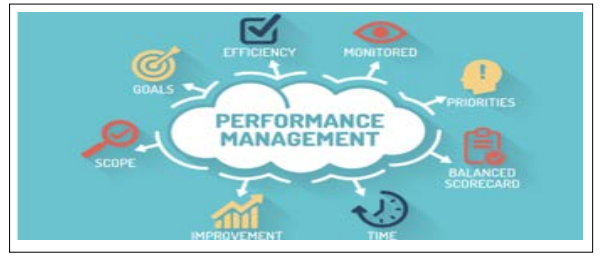
Figure 9: Unmasking Performance Appraisal Biases
Promoting Inclusivity through Personalized Development For the following employees from underrepresented groups, AI is effective in bridging the skills gap by offering accurate individual training opportunities. Having learned about employee skill gaps, performance history, and skills interests, these platforms provide training programs that will enable them to work effectively in their jobs. AI empowers every employee and strives to provide development opportunities for everyone regardless of gender, race, age, or other characteristics by focusing on individual career paths.
This way, an employee can work on specific areas of development that would facilitate the achievement of career advancements that the employees may have set. For instance, an employee who wishes to acquire leadership skills can be guided to courses or coaching programs on leadership skills. Besides increasing individual competencies, this approach reflects the sense of organizational membership and support.
It is easier for AI to detect factors that may lead to a lack of essential skills and the unavailability of a suitable mentor for the employee. Although these limitations may remain hard to tackle by most organizations, organizational development consultants can offer appropriate solutions toward their elimination to make it easier for employees to manage their careers. This proactive approach means that the employees continuously train and develop themselves, leading to an increased motivated workforce.
Through AI-based platforms, one can monitor the development of the employees over time and, therefore, change the program as and when required. This adaptability assures the employees that they will be on their toes as they are helped in their learning journey. Thus, on the one hand, spending on individual training is the organization’s response to inequality and active capitalization of workers.
AI coaching in the development of people will highly encourage companies or employers to ensure that they employ people from all over, regardless of their disability or gender. There is a great deal that organizations can do to train and enhance the professional capabilities of all without facing barriers that diminish their potential for advancement and meaningful contribution to the organization.
AI has the capacity to identify trends in promotions and career progression so that fairness in the company is achieved. Exploring promotion history, performance metrics, and employee characteristics, AI identifies possible promotion bias when some employees are not considered for a promotion. It is through this method that organizations can address the following issues in advance.
AI can offer data to assist organizations in improving their advancement programs when it has pointed out inconsistencies in promotion rates. For example, if the data divulges that some groups of employees rarely receive promotions, management can investigate and work towards demanding those employees. This ensures that all employees can feel valued and appreciated for their work.
To the workforce, AI can suggest suitable development programs for underrepresented groups of employees to provide them with all the necessary tools and practices for promotion [31]. It reduces minority rule by the majority, and by doing so, organizations can develop a leadership base with a demography similar to the workforce and consumers. This emphasis on equity as it relates to career progression is one way of improving the diversity of an organization’s culture.
Further, increasing the fair processes of career advancement also improves the level of workforce motivation and commitment. When employees notice other people are being hired and promoted in the company fairly, as opposed to prejudice, they will remain dedicated to their responsibilities. This culture of fairness and opportunity will attract the best talents and allow the company to retain them.
Organizations should use AI to guarantee employment opportunities to anybody regardless of the color of their skin because human beings have a right to work for any company they feel like without discrimination. More importantly, retailers should ensure that the needed support goes to the appropriate and deserving employee so that everyone is given a fair chance to grow in the system and the organization benefits from its empowered workforce.
AI can be a game-changer in remedying this scenario by providing a more diverse leadership talent pool for organizations operating in the retail industry. In this way, AI systems can help identify talented employees from minorities and provide them with career paths that suit them for leadership positions. Such an approach means that candidates will always be promoted to higher ranks irrespective of their colors.
With data analytics, AI can measure key performance indicators, career advancement, and leadership skills to pinpoint part-time workers capable of leadership. In other words, by following the four steps above, objective criteria for selecting participants for leadership development programs can be developed, making organizations’ leadership development programs more inclusive, equitable, and capable of addressing the potential unfair treatment of minorities in the workplace.
With the help of computational capacities, AI talent management systems can promote mentoring by finding suitable senior managers to oversee inexperienced talent. This kind of mentorship can help offer direction and assistance to these inexperienced leaders in their careers, thus assisting them in gaining vital expertise. In this way, organizations can foster talent of a diverse nature, making their leadership pools more reflective of the customers they serve. Using AI can assist with monitoring the success of diversification approaches within leadership development processes. It gives organizations a way of evaluating the promotion rates and retention of diversity leaders, thus finding ways of fixing what has gone wrong. This iterative process also ensures that diversity management efforts are improved without deviating from the intended goals.
Diverse leadership with AI’s assistance is significant for improving organizational culture overall. By increasing the diversity of the retail workforce with a diverse leadership team in place, retailers can improve innovation, collaboration, and decision-making excellence, thus improving overall business performance.

Although using Artificial Intelligence in workforce matters eliminates human Bias in making decisions, there is a caution to embrace since these systems possess Bias if the algorithm is wrong or if the set data is wrong. For instance, if data pulled from previous hiring or employee performance records has a male or white or middle/upper-class bias, then the AI system that is trained using such information will also be prejudiced. Thus, it is imperative to have a basic understanding of the biases and their origins regarding AI development.
The recommendation is that there should be constant assessment, appraisal, and inspection of the AI models to guarantee fairness and parity in employees’ working environment [32]. To ensure that retailers achieve equality in their Population, they should establish diverse datasets that reflect the population. The creation of cross- functional AI teams should also follow this. Not only does it improve the quality of data that are collected, but it also guarantees that multiple views are culled in the decision-making process.
The use of AI systems in organizations needs to be more structured and open enough to explain to employees how certain decisions are being made, including hiring, promotions, or evaluation. When the stakeholders know the methodologies employed in the AI algorithms, the anxiety of bias is eased; as such, the communication of these methodologies builds trust. This transparency is essential in creating an embracing organizational culture that supports and accepts all employees.
It is also necessary to monitor AI systems periodically to correct any bias when using them. Organizations’ inclusion of human overtones into the AI-executing systems enables them to intercede, where suitable, to guarantee that the decision-making decision- making is fair and meets equity standards. Thus, it is possible to note that merging artificial and human approaches to monitoring and transparency leads to more accountable AI in workforce management. The problem of AI bias is not only technological but also moral. In this way, retailers can apply AI to improve the workforce while creating a diverse and equitable workforce that mirrors their clients and society.
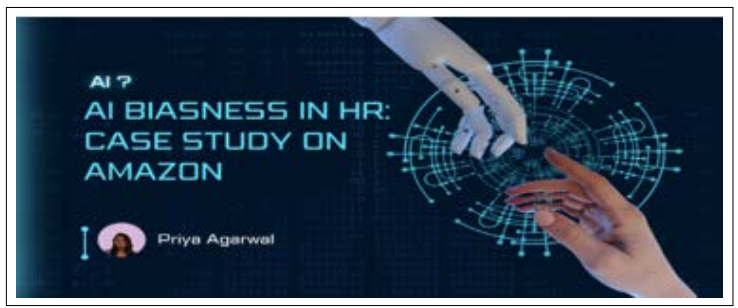
Figure 10: Addressing Bias in AI Algorithms for Fairer HR Decisions
Incorporating human capital management requires accumulating, storing, and analyzing site data concerning employees, such as their performance, engagement level, and other personal details. This poses many questions about the privacy of the employees’ data that organizations should find ways to respond to. It is the responsibility of retailers to implement policies that ensure that employees understand the data being collected, its purpose, and the people who will be permitted to access the collected data.
Organizations have to meet global regulations like GDPR and CCPA to increase the collected employees' data privacy. To protect employees’ rights, these regulations require organizations to respect employee privacy and acquire the means. It is essential to ensure that one employs sturdy security measures like encryption, anonymization, and restricted access to data to minimize the chances of people straying on the wrong side or having free access to the data.
Preserving data minimization principles in any AI system must be observed. Only relevant information should be gathered and stored. The simple way of achieving this practice is going back to the principle of collecting only the minimum amount of data that is required in the running of the business to further a) protect the privacy of the employees and b) reduce the odds of misuse. Employment of this approach not only safeguards the employees but also ensures that the company complies with the ethical issues of data management.
Making information related to data practices available creates trust between employers and employees [33]. Overall, employees are more likely to engage positively if they know how their data will be utilized and if they trust the security measures that were put in place. This trust is crucial in adopting AI technologies within workforce management.
This study's analysis highlights the importance of retailers protecting employees' data through stringent measures when implementing AI-driven systems. By having an effectively designed policy on AI programs and following good policies on data privacy, high privacy standards will be upheld in AI programs.
Matching Automation with Human Workforce Retention An ethical decision to be made in retail operations is implementing AI and automation tech, a challenge facing organizations, especially in job replacement and employee retention. With AI's increasing capabilities to undertake fairly predictable activities, from restocking inventories to answering customers’ queries, there is a danger of diminishing demand for some occupations. To overcome this challenge, retailers should balance reskilling and upskilling the employees.
Training can be accomplished through scholarships and fellowships, allowing organizations to equip employees with new skills relevant to occupancy in the current market. By doing so, retailers ensure that current employment takes up value-added positions, which will better go with AI than repetitive routine work. For instance, frontline retail staff may be trained to increase their role in personalized customer service delivery and data analysis.
Incorporating a people-centric focus means that instead of thinking of AI as a substitute for human abilities, it is preferred as a supplement to human efforts [34]. This perspective enables organizations to promote employee skill and career development by providing ways for employees to progress to other higher- level positions involving higher skills. There is evidence that such investments increase job satisfaction and, at the same time, support the employees' commitment.
The workforce can only be maintained if the culture supports change brought about by technology and learning new things. Employers should educate store employees about the change that is bound to occur with AI and automation and clarify that it is for the better since it will lead to a new range of job openings.
Balancing automation and keeping the workforce is of the utmost importance for any business and its ethics in the long run. Therefore, retailers should embrace the employment of AI and develop their employees to execute their tasks effectively.
AI-based decisions, which can include recruitment, performance appraisal, or workforce forecasting, for example, may sometimes take time to decipher and present a problem for organizations. Retail AI needs to be made trustworthy by guaranteeing the explainability of the AI solutions that arise. Both employees and managers should understand the logical flow of the AI system in decision-making, mainly where the decisions affect the career growth of workers in the organization, level promotions, rewards, or dismissal.
The deployment of XAI solutions can allow one to understand why the AI has made such a recommendation. Organizations can create trust in AI technologies and improve employees' acceptance by using the decision-making process to become more elaborate. When one is aware that their performance appraisal is based on specific criteria or that the hiring decision was reached because of specific reasons, then the person will feel appreciated and respected.
Retailers should also develop procedures through which employees can contest or appeal the outcomes provided by AI. This would prompt all AI-related proceedings and procedures to be fair and objective by allowing the employees to give their opinions or seek more explanations on certain procedures if need be. Sharing information at this level helps to develop an organizational culture that respects transparency and the principles of business ethical standards. Additional awareness can also be created through training sessions and workshops that will enable the employees to grasp the fundamentals of AI systems and their impacts. Thus, training employees allows organizations to foster a positive relationship with AI solutions implemented in the workplace. This preventive approach to transparency fosters a positive workplace culture in which the workers trust the AI systems affecting their employment [35].
The reception of transparent algorithms for AI decision-making is critical to making it an accountable component of an organization. This way, retailers could ensure the explainability of AI solutions and give voice to the employees, which would develop the firm's organizational culture of innovation.
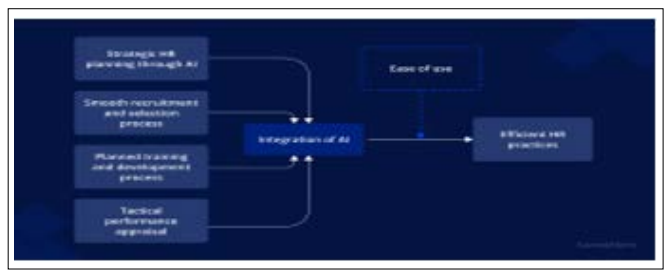
Figure 11: AI in HR: Transforming How Human Capital is Utilized and Valued in Modern Workplaces
Any Discussion Regarding AI must include Two Components Proper governance mechanisms must be implemented to prevent AIAIs from being misused in workforce management. Retailers must address some issues, including formulating ethical policies on using artificial intelligence in all aspects of human resource management, including recruitment and performance tracking. Additionally, the policies should cover the ethical aspect, legal requirements, and relevant organizational values.
One needs to establish oversight committees or ethics boards, which should always review the AI solutions being adopted. These bodies can provide oversight that the AI systems are working as expected, especially where ethical issues might appear regarding the use of AI systems. Maintaining a straightforward approach to management to keeping the following structures accountable for AI activities, ensuring compliance with generally accepted ethical norms. The same applies to the question of accountability, which also needs to be determined here. Businesses must state who is to blame for the results of AI decision-making. Whether the provider of the AI system is HR or the executives, their responsibility is to help an organization find redress if an AI system does not work or if ethical standards are violated. That accountability encourages discipline and follows in the organization.
In addition, there is also the issue of training, specifically for the retailer's employees who are directly involved in managing and implementing an AI system [25]. Since organizations can provide their workforce with various ethical considerations and best practices regarding AI, it becomes easier to create a force that can be sensitized toward the impacts of AI technologies. The focus on ethical training ensures integrity in how AI is used, which helps nurture a culture of ethical use.
To address the current trends in AI use in workforce management, the principles of ethical AI governance need to be incorporated. By setting guidelines and rules, providing supervision, and assigning responsibility, retailers can implement AI possibilities while following general and specific ethical guidelines and increasing organizational credibility.
When organizations adopt AI technologies into their operations, it is crucial to consider their concerns. Training AI models, especially large-scale ones, may consume large amounts of energy and thus emit high amounts of carbon. Therefore, nowadays, retailers have to use strategies that will help them reduce the negative environmental impact of implementing AI solutions while utilizing the advantages of technology.
A set of strategies to address AI's environmental impact is also possible to implement, one of which is optimizing model efficiency. In this way, organizations can avoid the costly world of populating data centers with increasingly elaborate, less efficient algorithms than the current state-of-the-art. Some strategies include using more energy-efficient models, eliminating unnecessary parts, and approximating model weights.
Retailers should consider using renewable energy to provide power for the structure of Artificial Intelligence. That is true; by embracing green energy solutions, organizations are likely to minimize the carbon footprints of AI solutions. This also means that working with data centers that embrace eco-friendly policies would make the organization culturally sustainable.
Checking the sustainable impact of AI projects is another requirement that needs to be followed systematically. By observing and evaluating the power use rate and carbon dioxide output relative to AI systems, retailers can identify opportunities for environmental enhancement. Transparent reporting of these metrics can also increase organizational accountability.
Developing sustainable cultural values within the enterprise is critical to further practical work. Employees at the retail level can also be involved in sustainability by being asked to contribute to the company and come up with more ideas regarding the effects of AI on the environment. The cumulative outcome is also beneficial to the organization and is an attractive feature for customers as more and more companies embark on sustainable practices.
Retailers' utilization of AI regarding the environment is beneficial because it ensures that technological changes will be environmentally friendly. Such an approach not only builds an organization's image but also helps positively impact the fight against climate change across the world.
The following paper seeks to explore how AI is transforming the retail industry in the area of human capital management (HCM).
By integrating AI into automation and predictive style, retailers can make more intelligent choices when it comes to hiring talent or distributing the workforce. More extensive data sets also make developing targeted employment experiences and retention more accessible, making HCM more effective in retail.
AI promotes workforce interaction since it consists of real- time data on employees' proficiency and satisfaction levels. In this context, AI technologies can help managers consult with concern, comment on specific and general performance, and address development plans for individuals. Such insights assist in developing a motivated and effective workforce that increases employee satisfaction and retention. Incorporating AI also helps workforce management, where one can easily schedule work and hire people as and when required h, which is very important in a retail environment.
There are some challenges that those retailers experienced in the course of the adoption of AI-driven solutions in HCM. This brings the problem of algorithmic bias, in which AI systems consciously or unconsciously recreate inequalities in hiring and performance assessments. Preventing bias when determining hiring promotions is crucial so that artificial intelligence will not allow prejudicial treatment when giving out jobs and promotions. Another challenge is data security so as not to violate the rights of the employees by having their data recorded by the retailers involved while adhering to laws such as GDPR or CCPA.
Several problems must be addressed, such as bias, privacy concerns, and the impact on employment. AI similarly has a favorable implication in boosting productivity by reducing work done by the workforce, primarily through the automation of tasks. Still, it has a negative effect whereby organizations risk losing some jobs because they use machines they do. As for the measures that should be applied alongside AI adoption, retailers should compare activities aimed at increasing the qualifications and training of workers to neutralize the threat of job losses and avoid disruption in the transition to the AI-based economy.
The retailers that will be able to incorporate AI in the HCM while considering the impacts that accompany them, such as bias, data privacy, or the monopolizing of jobs leading to job displacement, are likely to gain the upper hand in the ever-competitive retail market. Benevolently deploying AI means retailers can improve workforce productivity, engage employees, and create a leaner and, thus, more competitive organization. Looking at the future of HCM in retail, the fact is that advancement in AI technology should coexist and complement human-driven solutions.
